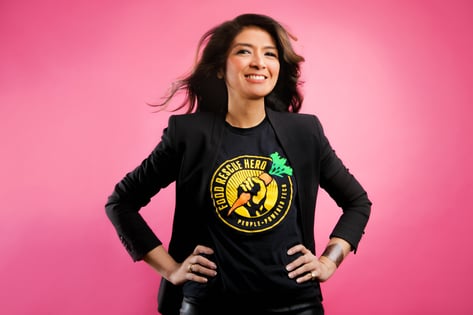 Pictured: Leah Lizarondo, Co-Founder & CEO of 412 Food Rescue. Courtesy of Laura Petrilla Photography
Pictured: Leah Lizarondo, Co-Founder & CEO of 412 Food Rescue. Courtesy of Laura Petrilla Photography
When I was first pitching my nonprofit tech platform to funders, I was often met with skepticism about a key component of the model: “You’re really going to rely on volunteers to do all this?” The answer, even back then, was an unequivocal “yes.” Five years and an incredibly effective network of 25,000 volunteers later, I hope more nonprofit leaders and donors are seeing what I see.
Crowdsourcing the Wheels
My organization 412 Food Rescue and its national tech platform, Food Rescue Hero, bridge the last mile between businesses with good surplus food and the people who need that food the most. I was inspired to start this work when I learned an alarming statistic: in the U.S., 40% of the food we produce is wasted, while one in seven households are food-insecure.
Almost a third of this waste occurs at grocery stores, restaurants, and other consumer-facing businesses. Every year, this sector finds itself with 23 million tons of surplus food that it can’t sell, and only a small percentage ever gets donated – most of it ends up in landfills, where it becomes a major contributor to greenhouse gas emissions.
Retail food donation presents a number of logistical challenges: pick-up locations are dispersed; amounts and types of food are variable and unpredictable; and most surplus food is fresh and perishable and therefore needs to be consumed quickly. The traditional spoke-and-hub model, based on trucks making regular pick-ups and delivering to a central food bank, misses too much of the most nutritious foods. This means that only 15% of the food available at traditional food pantries is fresh. We needed a more flexible strategy.
This model also fails to reach too many of the people who need food assistance. Food insecurity overlaps significantly with other access barriers, such as lack of transportation and time — 75% of those in poverty do not have access to cars or high-frequency transit. While traditional interventions like food pantries and SNAP are important, making use of them can require expenditures of time and effort that people living below the poverty line simply do not have to spare. Imagine being a single parent, for example, navigating public transportation to pick up food for your family between shift work and childcare hours.
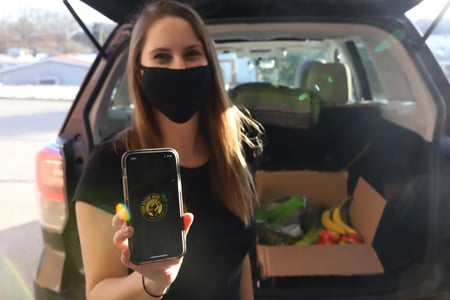
We believe that food insecurity intervention needs to adopt a philosophy of convenience, for both the volunteer and the recipient, to design a program with meaningful impact.We needed a more dispersed network of distribution sites to bring food closer to the places recipients already live and frequent: places of worship, community centers, places of worship, housing centers, and even individual homes.
I saw that there was already an existing model for transport from a broad array of pick-up locations to a broad array of drop-off locations: ridesharing and food delivery apps like Uber and DoorDash. While those platforms are based on the work of paid drivers, we made Food Rescue Hero for volunteers. I believed that most people were looking to technology not only for ways to earn money, smooth over inconveniences, and get instant gratification, but also for ways to do good.
Our Food Rescue Heroes have vindicated that belief abundantly. We have recruited the world’s largest network of on-demand volunteer drivers, and they deliver on 99% of all available rescues from our hundreds of donor businesses. They are not only reliable but also, often, prolific. Many have performed hundreds of rescues. One particular septuagenarian in Pittsburgh has completed over 1,500 rescues. It turns out that, if you present people with a way to help out that fits into their lives, they will use it again and again.
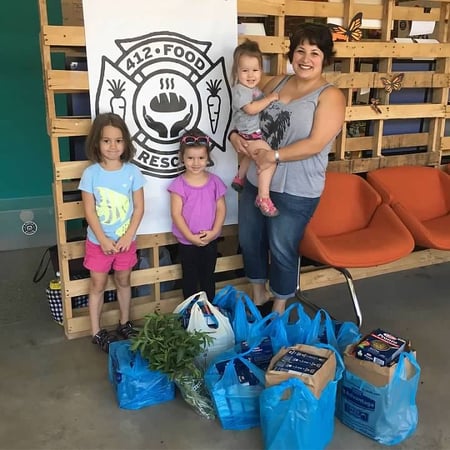
Harnessing the Wave
The most vivid manifestation of this community spirit came at the start of the pandemic. As the initial lockdown shuttered businesses and schools, and a sense of isolation descended, Food Rescue Hero was flooded with the biggest surge in downloads we’d ever seen. We watched the numbers go up like an unbelievably fast-moving ticker as, across multiple cities using the platform, almost 5,000 people downloaded the app.
Because our model is built for contingencies (unpredictable donations, unexpected hurdles), we were ready to harness this groundswell of support and adapt to the constantly changing conditions created by the crisis. We had looked to the crowd to make our network flexible and resilient, so it could handle the twists and turns of the food recovery landscape; it ended up taking a global pandemic in stride as well.
Knowing that this crisis would cut off food access for many elderly, immunocompromised or otherwise at-risk people, we also fast-tracked a pilot home-delivery service in Greater Pittsburgh and with our partners in Prince William County, VA. Participating volunteers delivered a combined 271,200 pounds of food to more than 18,000 households, and now the feature is available to all volunteers across the country.
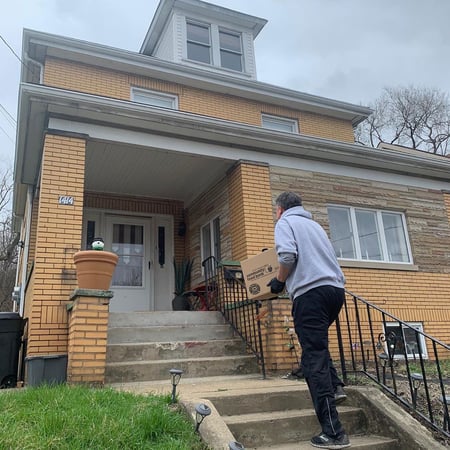
With Our Powers Combined
Thanks to all our volunteers across the 15 cities with active Food Rescue Hero networks, this year we reached 70 million pounds of good food saved to feed people instead of landfills. That’s equivalent to 57 million meals, carried to their destinations in our volunteers’ cars or trucks, in their minivans next to children excited to help, on their bikes, or even on their shoulders as they made deliveries on foot. And all sorts of people have stepped up to do this work: artists, activists, teachers, musicians, small business owners, parents, teenagers, retirees, and many more.
I have found that we don’t need to motivate people to do good – people motivate themselves. Our job is to get them to that first experience, to overcome the hurdles to that first rescue, that first instance of doing something for another person. Once we are successful at that, it becomes a natural, virtuous cycle. It’s truly unbelievable to see.
The ideal experience for a user of our app is to feel that “pay-off”: the incomparable, indescribable feeling of fulfillment at your core after you know you have made a difference in someone’s life. It’s a million times better than seeing a “like” on your social media post. It’s life-changing. It keeps people coming back. In the end, by helping others, we are helping ourselves.
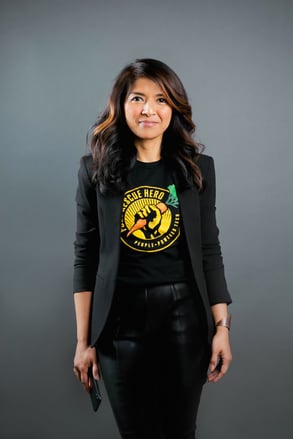 About Leah:
About Leah:
Leah brings a 15-year track record of leadership positions with global corporations and nonprofits. Leah received her Masters Degree in Public Policy from Carnegie Mellon University graduating with Highest Distinction.
She began her career as a product manager in Southeast Asia, working in consumer packaged goods and technology before moving on to her passion in food and health advocacy. She has worked in leadership positions in nonprofits in New York and Pittsburgh. She is interested in the intersection of social good and technology and mines her experience launching startups as she works to grow 412 Food Rescue.
Leah is an active advocate for food, health and innovation. She has also trained at the Natural Gourmet Institute in New York City and received her Certification in Plant-based Nutrition from Cornell University. The Brazen Kitchen, Leah’s blog and Pittsburgh Magazine column, won the 2013 National City & Regional Magazine Awards. Her work has been featured in national media including NPR, Oprah.com, and GOOD Magazine online. In April 2014, she gave the TEDx Talk “Why the Farm Is Not Getting to the Table.” In 2017, she was named in SmartBusiness “Who To Watch” as one of the individuals “poised to shape the Pittsburgh region in 2017 and beyond” and FoodTank‘s “17 Food Heroes to Inspire Us in 2017.”